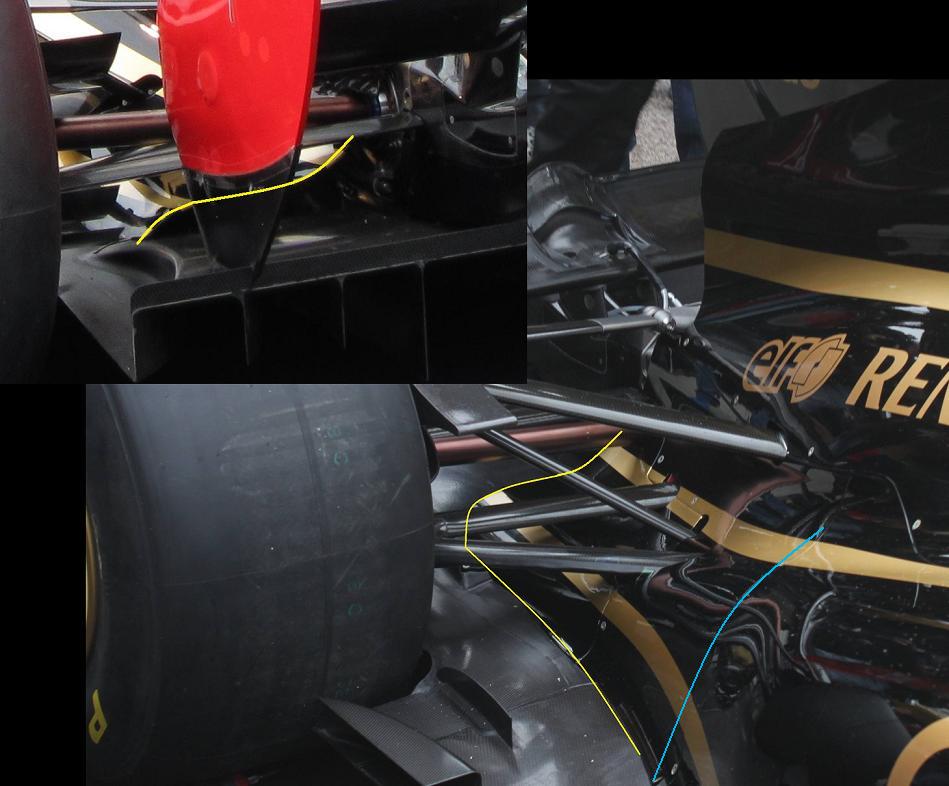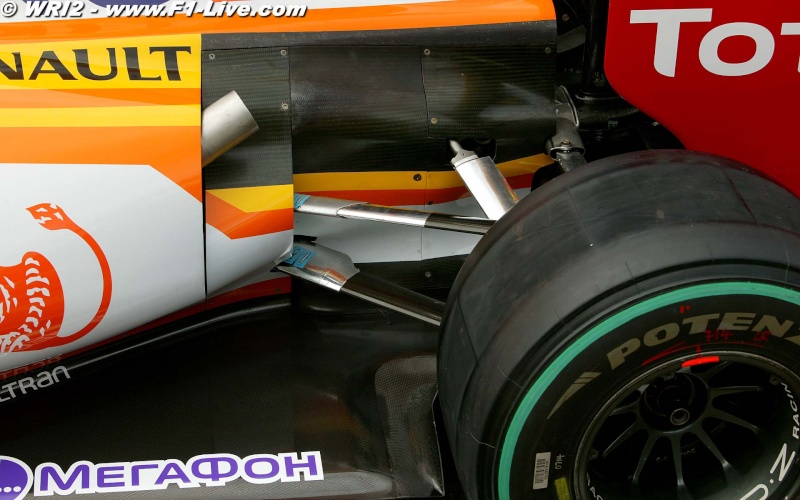- Login or Register
No account yet? Sign up
If my following assumption is incorrect, could you explain a bit more about the part I've bolded?NormalChris wrote:The fact that the inlet to the sidepods is larger than the outlet on most the cars could mean that there is some acceleration of the flow although I would think it negligible. On smaller formula car design you typically want the area to be the same. To expect a usable pressure increase through radiators, oil coolers, then through the exhaust manifold around the transmission and suspension is a little far fetched. Wouldn't there have to be some plumbing in there for it to feasible, or else every other car is wasting this opportunity? I think its just an additional area to exit the flow (besides the engine cover) that might be influential to the surrounding area. Possibly helping the discharge from the FEE? Gurneys on a diffuser are also very common.
Im not sure whats going on, im saying that I dont think that the velocity of the air coming out at the back above the diffuser is blowing the diffuser.It really seems that the exits are smaller than the inlets but if combined with all possible venting it might match up closer than what it appears. Sidpods are drag inducing ovens yes? You can try to negate that in different ways to translate it into an advantage but I dont think "blowing" is whats going on at the back of the renault, but it could be. If it is I dont understand why other teams haven't used this in a more advantageous way.Twaddle wrote: I'm assuming you mis-typed and are talking about velocity increase, rather than pressure, since getting heated by all those things combined with being in an enclosed space is what's likely to cause the pressure increase. While you would expect significant turbulence to be generatd by passing over all the cooling surfaces, the fact that sidepod exits appear to be so much smaller than the inlets suggests that there is an appreciable velocity increase. If there isn't then surely there must either be some other exits that we aren't seeing? That or they've built themselves a car with a couple of drag generating ovens strapped to the side.
Renault radiator is equivalent to the muffler in the example.AbbaleRacing77 wrote:Like i said its not a unobstructed free flowing stream of air (we know this). But the air is still being pushed through. The air has to go somewhere especially at 200mph. And if its not... Then i would think theres gonna be some major cooling issues. Like i said... If it didnt work, it would be pretty unintelligent to design sidepods that big... And dont even try to tell me that its because its to make room for the forward routed exhausts. Its a 4 or 5 inch pipe not a sewage drain.
Ringo... that huge opening in the front of the side pod + 200mph = your mass flow for ya
***Perfect example--- Ever look at a super trap exhaust or a muffler in general? Would you agree that its turbulent? Now what has a more powerful flow... a muffler setup or straight pipes? Your answer... theyre exactly the same.. yes the muffler has more resistance and turbulence (nobody denies this) but under pressure theyre gonna flow the same amount of air because the same amout of air is coming out of the motor and being forced out the end of the exhaust. Your turbulence theory is irrelevent when under alot of pressure.
Now add a nozzle to the end of that muffler for a higher velocity (Nozzle= r31 tiny sidepod exits)... this is what renault is doing in theory
Im getting tired... can someone that understands take the night shift to explain this once again to the next person that tells me its
turbulent under the engine cover... Thanks
scarbs wrote:They're wheel force sensors for building up their tyre simulation models...
see:
http://www.kistler.com/LI_en-ch/13_Prod ... -cars.html





Maybe by keeping the hot air exhaust low and above the diffuser the quality of air being directed onto the beam wing is more effective? whilst also creating a blown diffuser effect??Ok, Normalchris. If blowing the diffuser is not the aim, why are these outlets shaped that way ? why are they very low placed and scarifying valuable space on the floor ?
Correct me if I'm wrong, but there is no air flowing directly on the diffuser and touching it, except the air that exits those outlets.
If the only purpose of the outlets was cooling, why Renault did not cut the bodywork somewhere near the blue line, for example, exactly like on the R30 and late version of the R29, and opened a big path toward the diffuser ? they could easily place the outlets there, just in front of the suspensions, like in the cars I mentioned.
They also had the possibility to tighten the coke bottle shape a lot and use a big outlet a la RedBull...

The ducting takes up prime real estate though. If all it was doing was venting hot air, it would be much more efficient to do that in a more neutral spot and free the space for external flow (massive amounts of air).Robbobnob wrote:
Maybe by keeping the hot air exhaust low and above the diffuser the quality of air being directed onto the beam wing is more effective? whilst also creating a blown diffuser effect??
just food for thought, interested on your opinions
